By Dan Weisz
Osprey are large hawks who specialize on a diet of live fish. They are always found around water and are commonly seen in Rocky Point, Mexico, during the winter. They can be seen on occasion in Tucson as they migrate through on their way south for the winter
Osprey have brown backs and wings that contrast with their white underparts. The head is white with a brown line through the yellow eye and their beak is strongly hooked. Here is one adult.
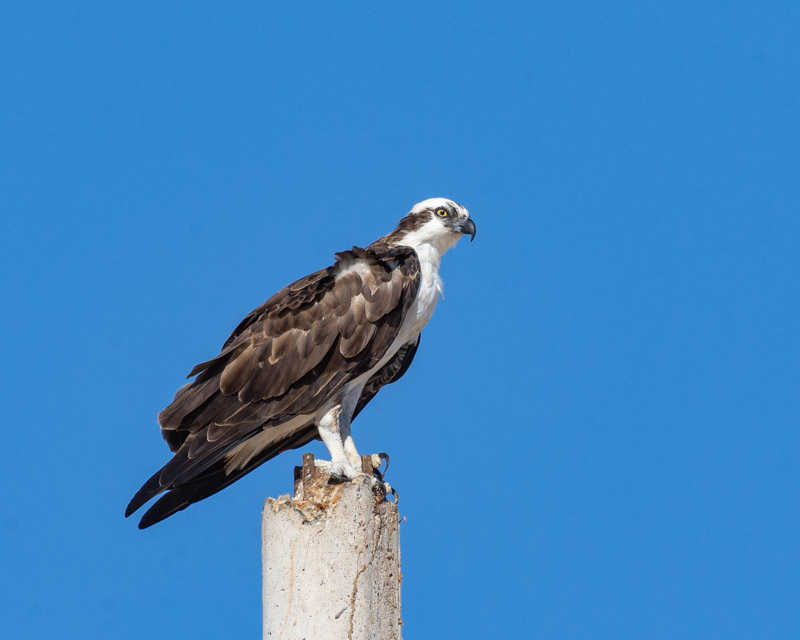
This second bird was facing towards a strong morning wind while standing on one leg. I’m not sure why it was calling but they will call when an unfamiliar osprey is approaching. You can listen to their call here: https://www.allaboutbirds.org/guide/Osprey/sounds
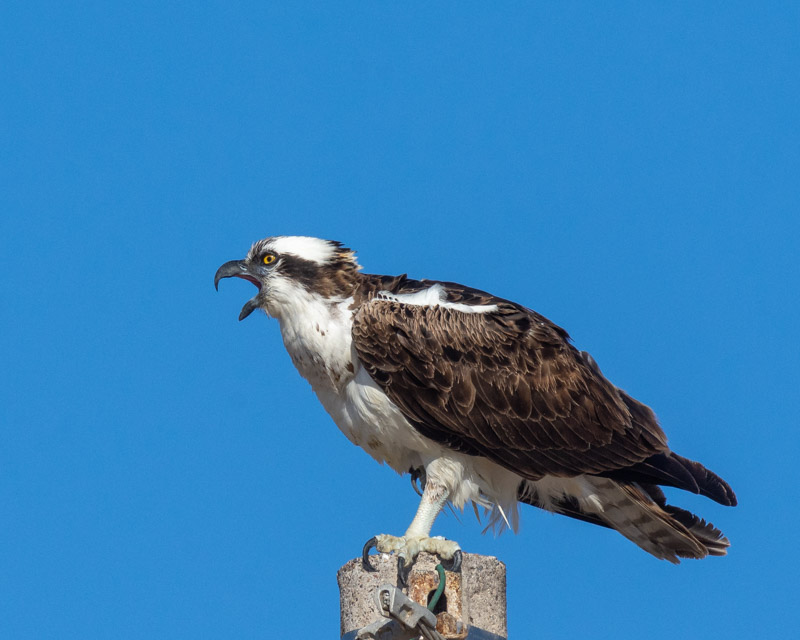
Osprey are large birds with a five to six foot wingspan. Their wings are very long and narrow and their flight feathers are strongly barred. In flight, their white bellies are prominent.
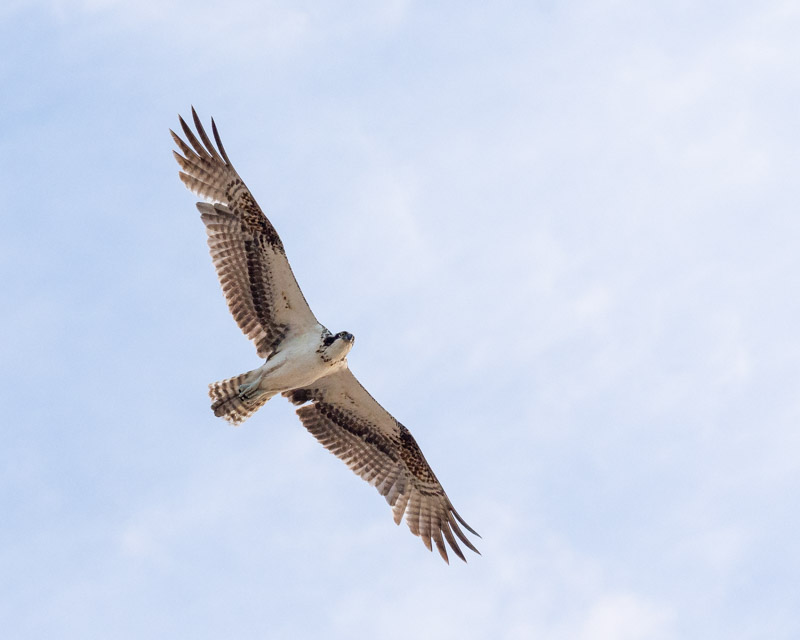
When Osprey fly, their wings are always kinked, forming an “M” shape. They hunt over shallow water. This bird was slowly hovering over the beach looking for breakfast. It was flying towards the east but its head was turned towards the water in search of fish.
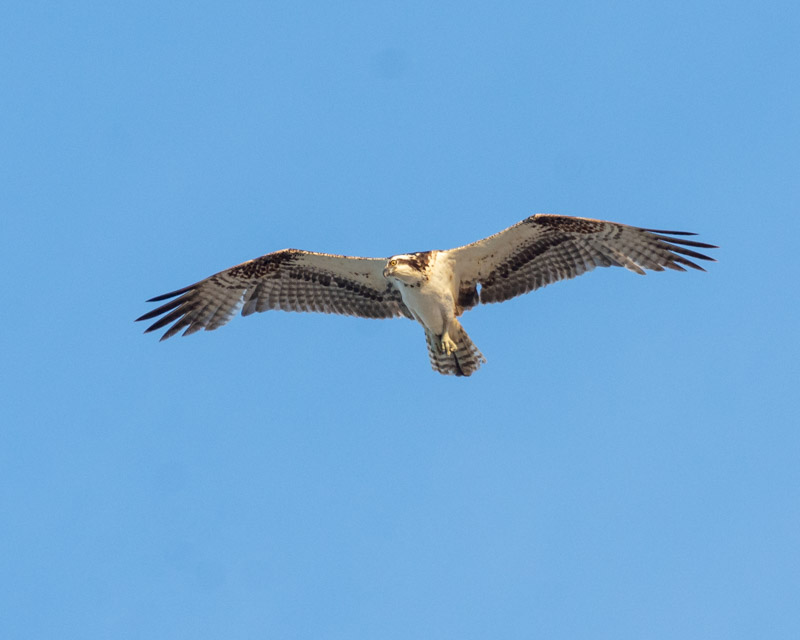
Now the Osprey has cocked his head to the side. The “M” shape of its long wings is classic.
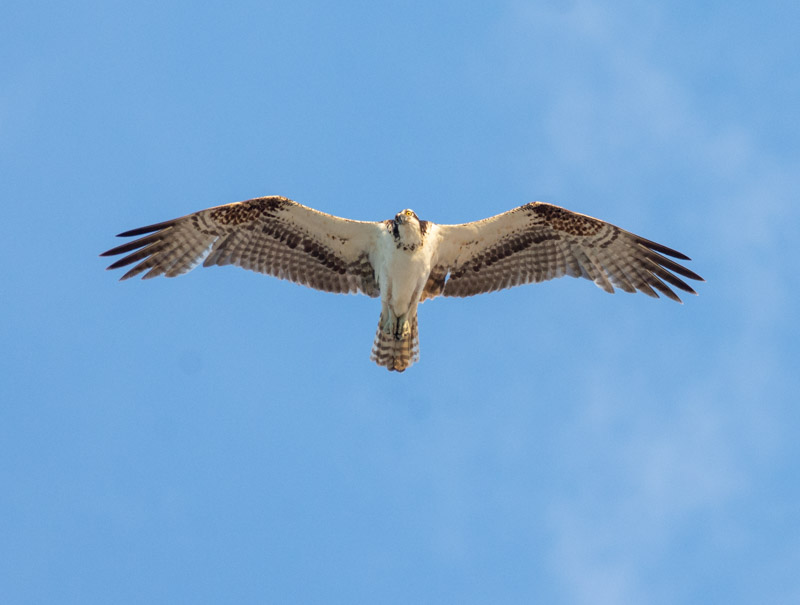
The next two photos are not focused well but show some drama in the sky as a Peregrine Falcon chased this Osprey for a while. These two raptors do not compete for food- Osprey are fish specialists and Peregrines are bird hunters- but the Peregrine’s nature is to assert itself as the dominant bird in the sky.
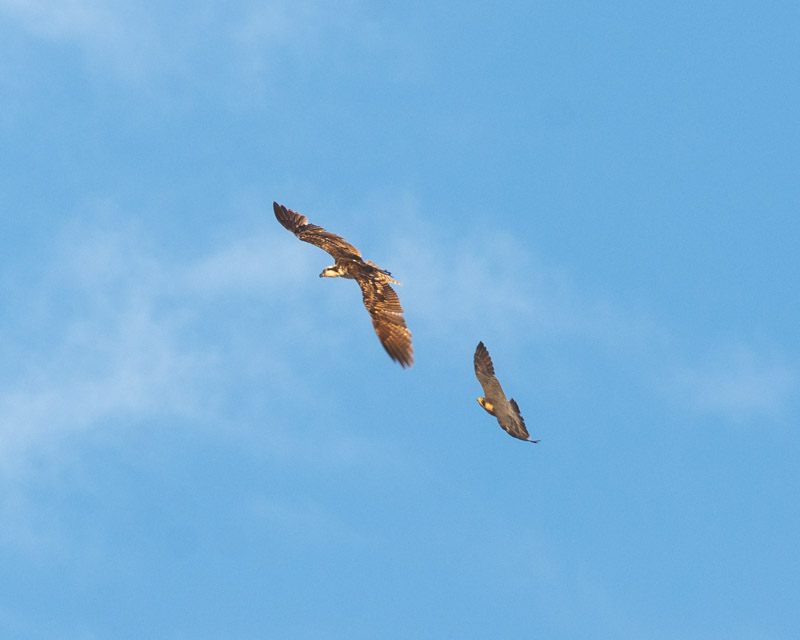
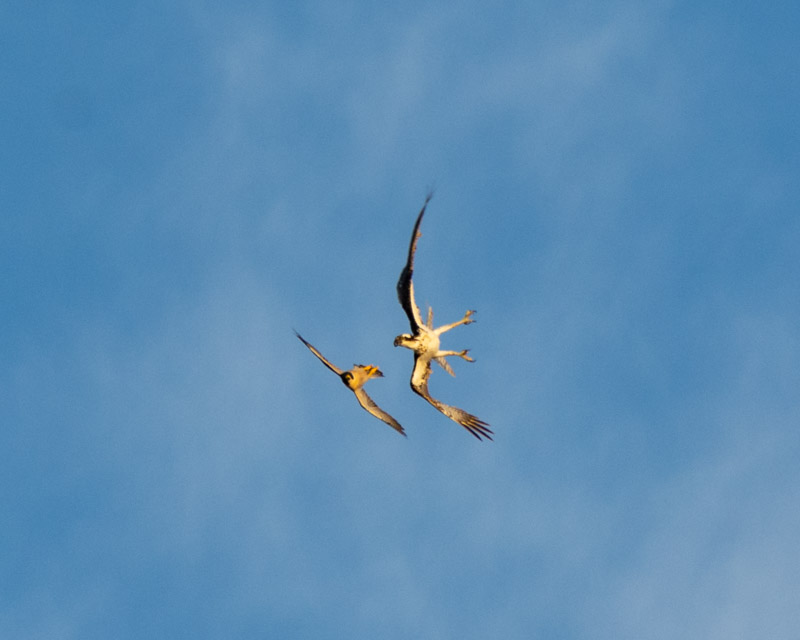
The Peregrine left the area and the Osprey resumed hunting. The bird below is a different Osprey and you can see that two new dark tail feathers have grown in. This bird was approaching a tall condo to land on and was adjusting his flight speed and altitude. With its wings sharply bent, you can see the “alula”- the bird’s thumbs- in play. These winglets are used as aids during slow flight or landing.
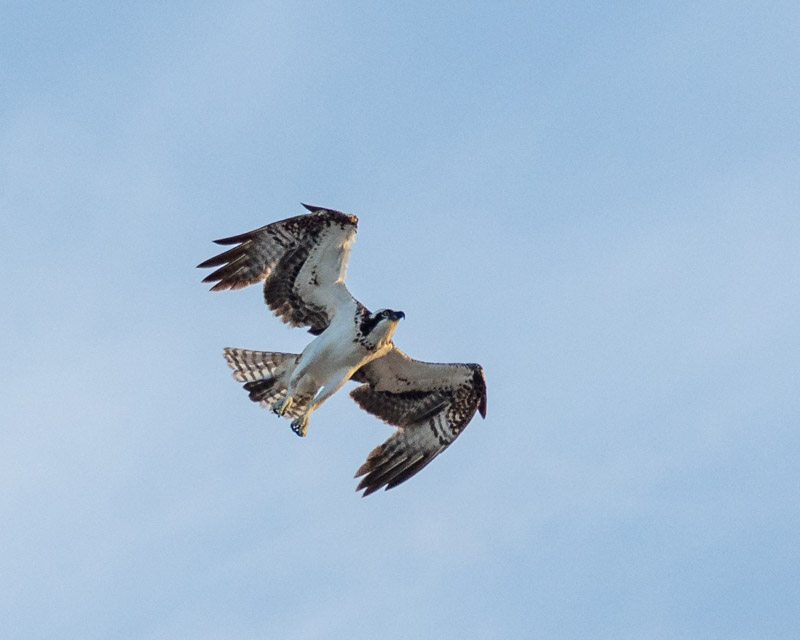
Populations of Osprey declined dramatically in North America in the middle of the last century due to DDT poisoning but Osprey are now another symbol of conservation success. After the 1972 U.S. DDT ban, populations rebounded. Osprey are still listed as endangered or threatened in some states. Natural nest sites continue to be eliminated due to tree removal or shoreline development, but Osprey have responded well to man-made nest platforms. Osprey populations in North America have continued to grow since the mid-‘60s.
Return to Foothills Clusters home
